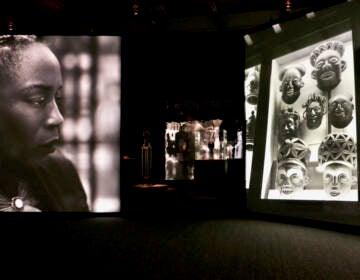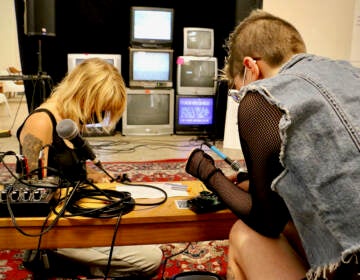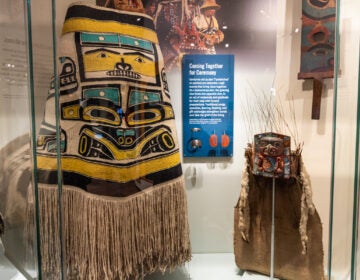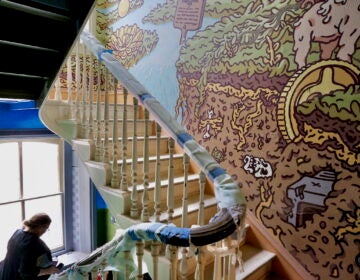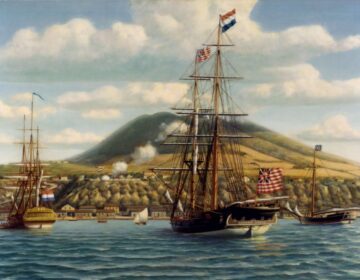Philadelphia Art Museum acquires an entire room from Fleisher Art Memorial
40 years ago, artist Shia Armajani designed a lecture hall for Fleisher Art Memorial in South Philly. Now the Art Museum is acquiring every scrap.
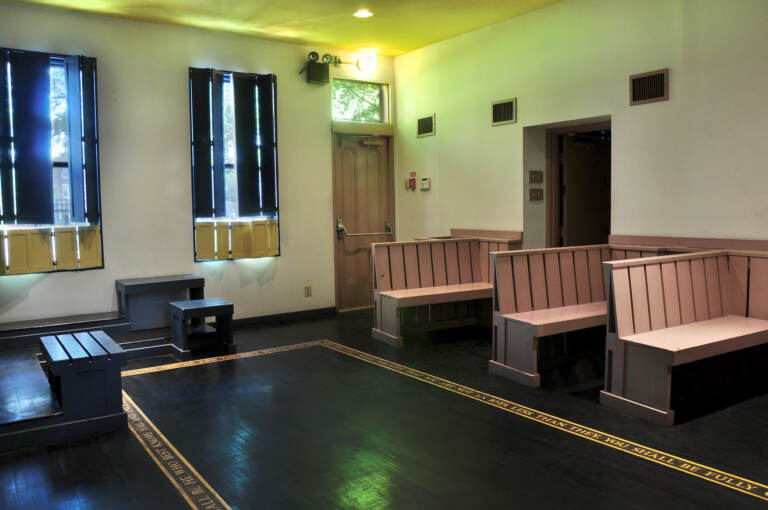
The Louis Kahn Lecture Room was designed by artist Siah Armajani for Fleisher Art Memorial in South Philadelphia. Elements include wooden benches and shutters and a quote from a Walt Whitman poem inlaid in the floor. (Courtesy of Fleisher Art Memorial)
The Philadelphia Museum of Art is taking a room from the Fleisher Art Memorial in South Philly.
It isn’t renting a room. The museum is removing the Louis Kahn Lecture Hall entirely, taking all the furniture, trimwork, floorboards, window treatments, even the transom glass over the door.
All of the pieces are elements of artist Siah Armajani’s creative vision, a tribute to Quakerism, democracy, and the architect Louis Kahn. It was installed 40 years ago as a commission by what is now the Association for Public Art. The room itself is his artwork, now a permanent part of PMA’s collection.
“Architects are artists themselves. Distinguishing between modes of working is something that Armajani was trying to push up against in his practice,” said Amanda Sroka, PMA’s associate curator of contemporary art, surrounded by the disassembled parts of the room ready to ship to the Museum’s conservators.
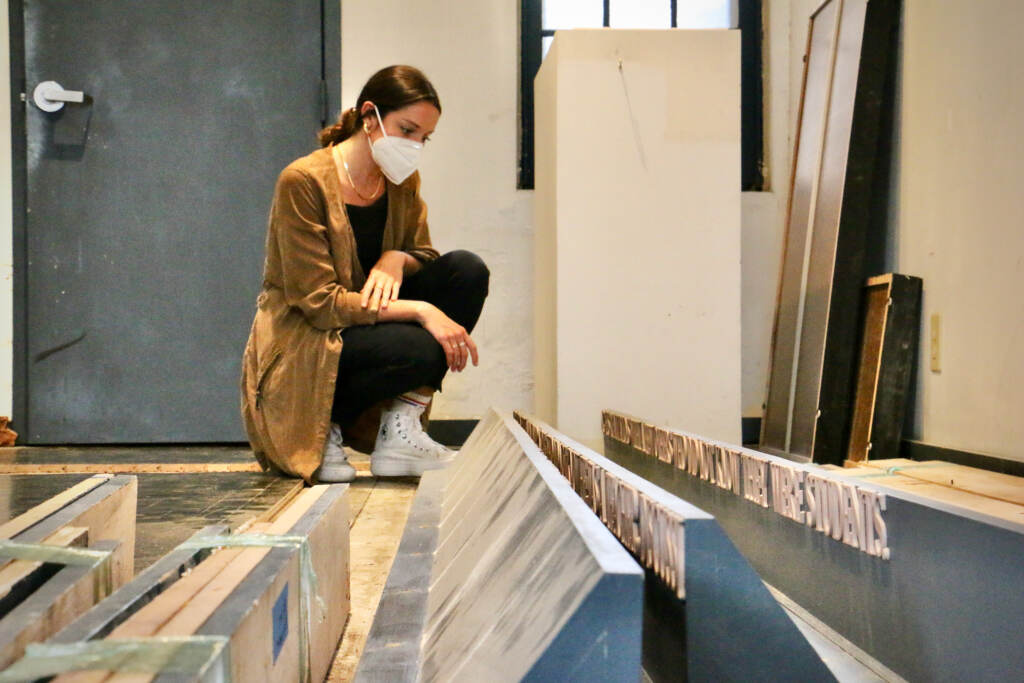
Armajani, an Iranian-American artist who spent most of his life in Minneapolis-St. Paul, was known for his large-scale sculpture pieces, including bridges and rooms that blurred the line between art and architecture. He died in 2020 at age 81.
Four decades ago the Association for Public Art (then called the Fairmount Park Art Association) approached Fleisher to see if it would host a public art project by Armajani, who would design a room adjacent to Fleisher’s sanctuary.
“Being that Fleisher is open to the public and we are an independent, nonprofit institution serving the public, they thought this would be a good place,” said Fleisher’s interim director Rebecca O’Leary. “The installation itself was very much like a lecture room and was meant to be a place of contemplation, of reflection.”
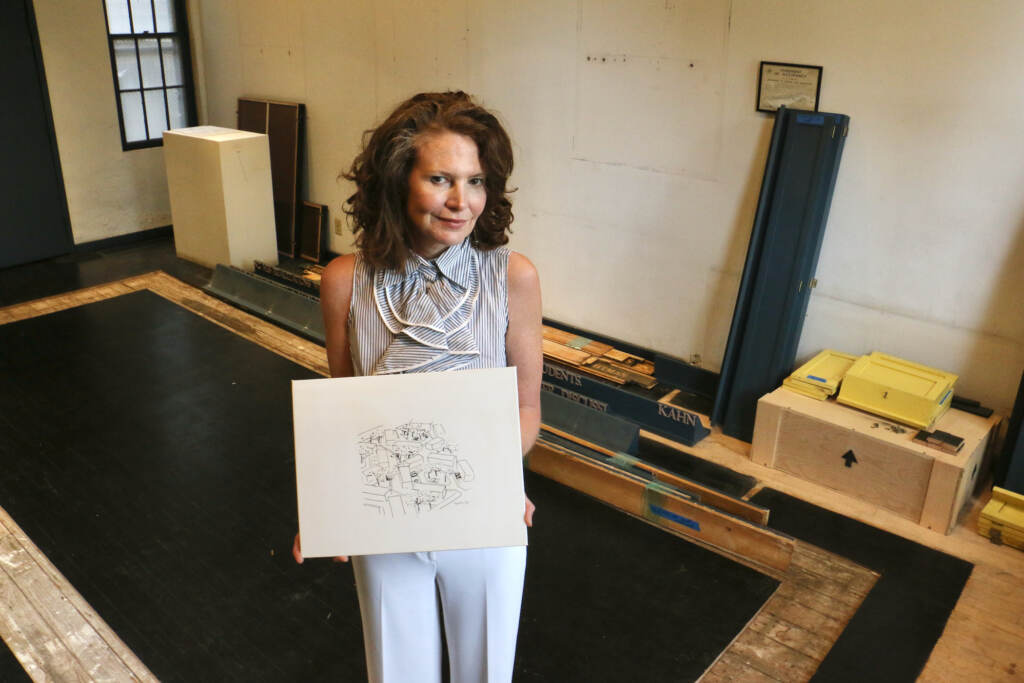
Armajani made the lecture hall with simply-made wooden benches and raised lectern, similar to a Quaker meeting house, painted a soft pink. The window shutters were painted a dark blue, with a set of small hinged shutters on the bottom painted vibrant yellow.
Sroka said the shutters were not quite intuitive.
“They just have these fun, funky bends to them that I found really playful, but they weren’t completely logical,” she said. “It was clearly intentional to make them in this way that made you question something as simple as a shutter. That kind of provocation was certainly in the room.”
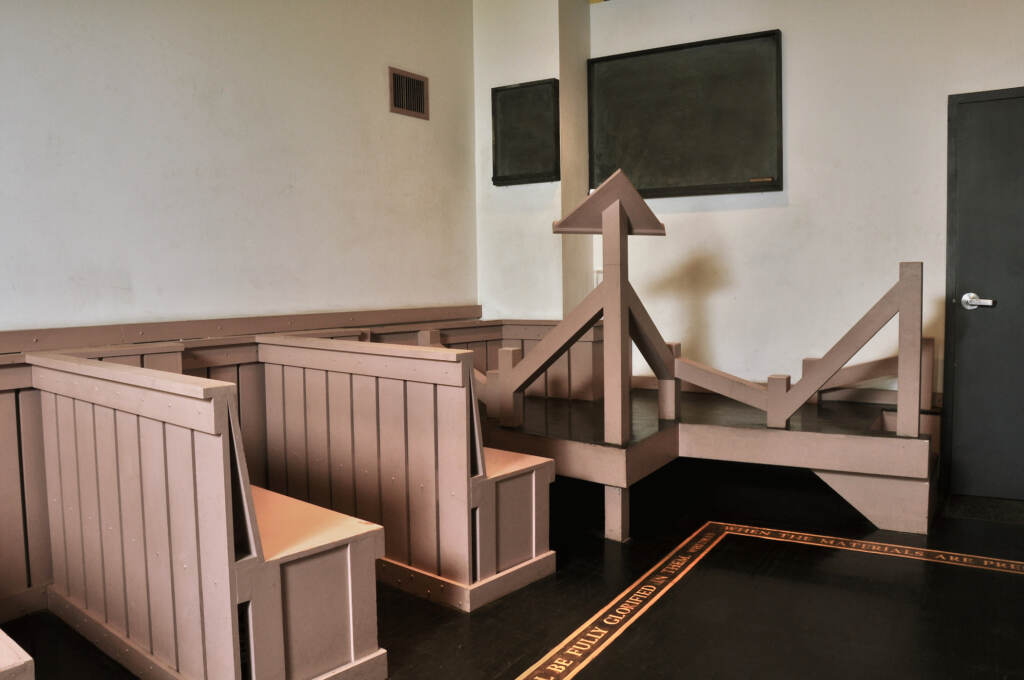
While conceiving the room, Armajani discovered that Louis Kahn had taken art classes at Fleisher as a child in the 1910s. So he made the room a tribute to the renown architect, etching one of his drawings into yellow glass in the door transom.
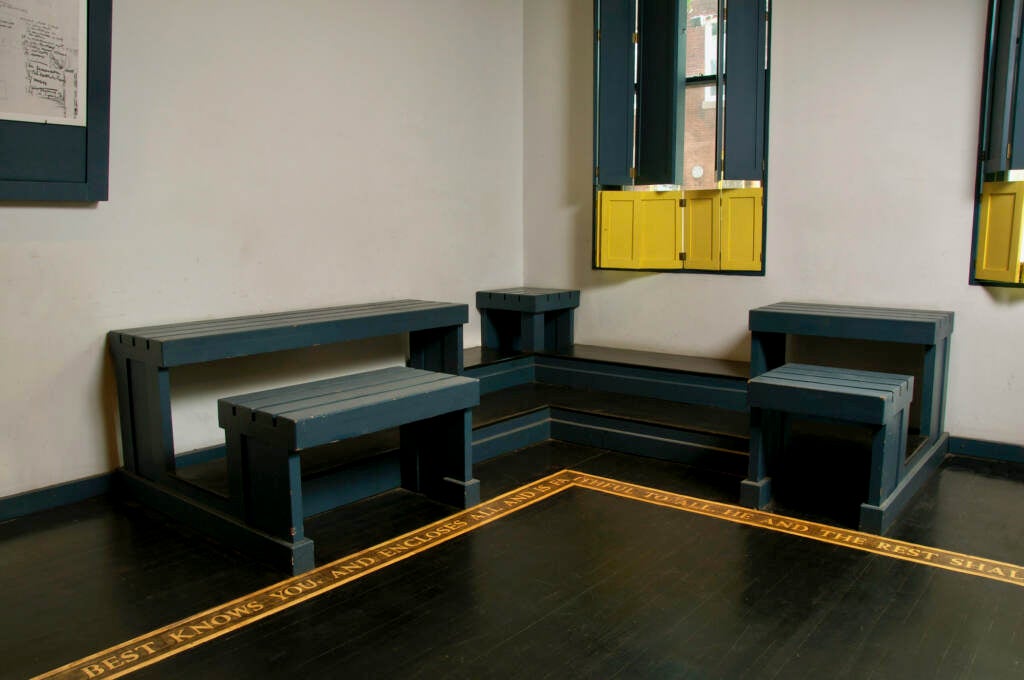
The ceiling cornice is crowned with a quote from Kahn: “Schools began with a man under a tree who did not know he was a teacher, sharing his realization with a few others who did not know they were students.”
The ceiling’s reverence for architecture is echoed in the floor. The wooden floorboards are painted black, inlaid with the outline of a large rectangle. It contains a passage from Walt Whitman’s poem “A Song of the Rolling Earth.”
When the materials are all prepared and ready, the architects shall appear.
I swear to you the architects shall appear without fail,
I swear to you they will understand you and justify you,
The greatest among them shall be he who best knows you,
And encloses all and is faithful to all,
He and the rest shall not forget you, they shall perceive that you
are not an iota less than they,
You shall be fully glorified in them.
“Creating these rooms was really about the democratic potential of architecture,” said Sroka. “The things that would happen and are shared were much more important to him than the actual materials of the room itself.”
But when O’Leary arrived at Fleisher a year ago for her first day as interim director, she saw the room was not being used in the way Armajani intended. It was crammed with boxes; cleaning supplies were stacked on the benches.
“I realized how important this room was and what respect it should be commanding,” she said. “I said, ‘No more supplies, no more storage in this room whatsoever. It goes out. I don’t care where it goes, but this room is really to be honored.’ It’s a very special, unique place.”
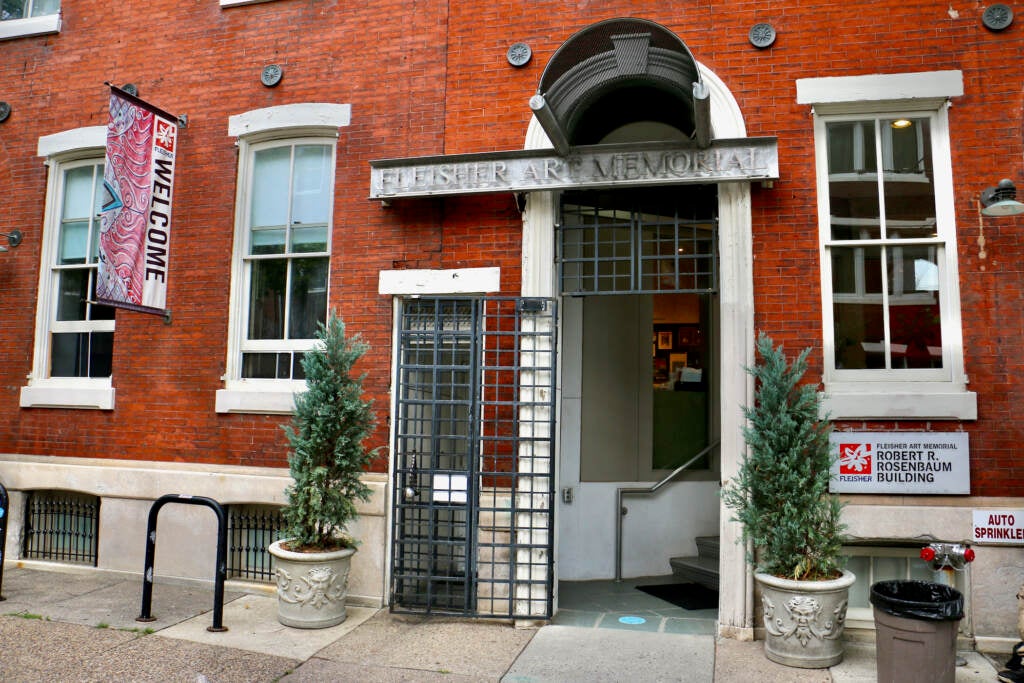
The Fleisher Art Memorial had changed since Armajani had designed the space: its art classes and programs for children and adults had increased, with many more people using the space. What was supposed to be a contemplative room had become partly a corridor to office and class spaces upstairs, and partly a storage overflow.
By the time O’Leary arrived, talks with both the Art Museum and Armajani’s widow had already been underway to give the room to the Museum. Before all its elements were pulled out, the space was meticulously documented inch by inch. Even small pieces of the walls and ceiling will be cut out and removed, to archive the color.
Sroka said some objects, like the benches, could be faithfully reconstructed if need be, but other items like trim work with quotations in the floor and ceiling would be difficult or impossible to accurately replicate.
“That’s a challenge for us as an institution that, traditionally, is an institution of objects, to then say it’s not about the object itself but about being able to preserve the energy of this room,” she said.
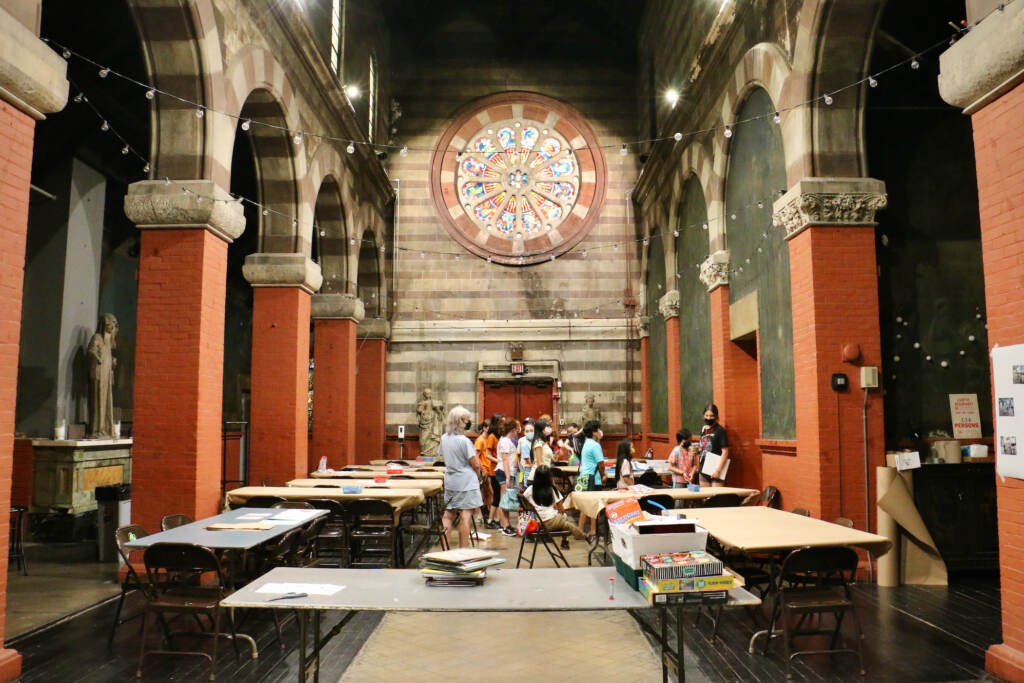
This will not be the first room the Art Museum has acquired. It already has an entire Japanese tea house permanently set up in its galleries, an Indian temple, stone architectural elements from a Gothic cathedral, and a fireplace and mantle carved by Pennsylvania woodworker Wharton Esherick, among others.
The next stop for the room’s elements will be the Art Museum’s conservation department to make sure they are stable. Sroka said the museum does not yet know what will ultimately become of Armajani’s lecture hall.
The now empty space at Fleisher will likely become a kitchen, according to O’Leary. With many immigrant families in the community who commune around their native foods, and an adjacent historic sanctuary that can be rented as an event space, O’Leary said a full-service kitchen would serve Fleisher’s mission best.

Saturdays just got more interesting.
WHYY is your source for fact-based, in-depth journalism and information. As a nonprofit organization, we rely on financial support from readers like you. Please give today.



